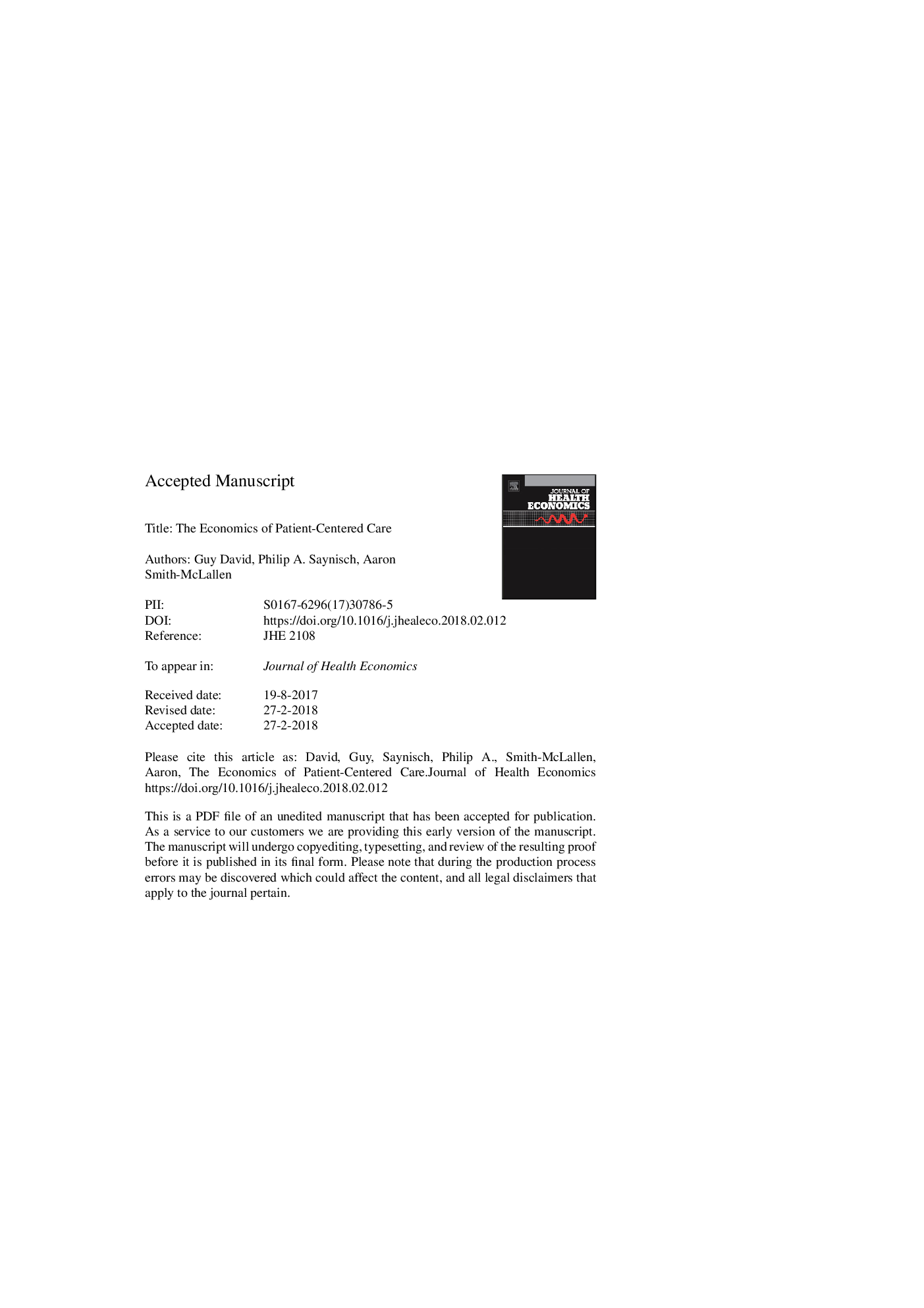| Article ID | Journal | Published Year | Pages | File Type |
|---|---|---|---|---|
| 7362763 | Journal of Health Economics | 2018 | 50 Pages |
Abstract
The Patient-Centered Medical Home (PCMH) is a widely-implemented model for improving primary care, emphasizing care coordination, information technology, and process improvements. However, its treatment as an undifferentiated intervention in policy evaluation obscures meaningful variation in implementation. This heterogeneity leads to contracting inefficiencies between insurers and practices and may account for mixed evidence on its success. Using a novel dataset we group practices into meaningful implementation clusters and then link these clusters with detailed patient claims data. We find implementation choice affects performance, suggesting that generally-unobserved features of primary care reorganization influence patient outcomes. Reporting these features may be valuable to insurers and their members.
Related Topics
Health Sciences
Medicine and Dentistry
Public Health and Health Policy
Authors
Guy David, Philip A. Saynisch, Aaron Smith-McLallen,
